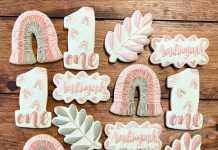What is it?
The enneagram is a personal growth tool that characterizes people into 9 personality types based on their key motivation, but the scope of the enneagram is so much deeper and more nuanced than that simple definition.
Where did it come from?
According to wikipedia, similar principles to the enneagram were found in the works of Evagrius Ponticus, a Christian Mystic living in Alexandria in the 4th century. Oscar Ichazo, a Bolivian man, built upon that in the 1950s to create the beginnings of the 9 personality types we have today. Chilean-born, Claudio Naranjo, then brought Ichazo’s teachings to the United States in the 1970s. Since the 1980s the enneagram has continued to spread throughout the US, and has gained significant traction over the last 5 years.
 What makes it different?
What makes it different?
One of the main things that sets the enneagram apart from most personality tests and profiles is its focus is on the motivation of each personality type, not merely on the behavior. Multiple types will at times engage in similar behaviors, but each type will have a very different motivation. (Review the list below under “How do I find out my number” to see the core motivation for each number.)
The enneagram is more about being a tool for personal growth than a test to explain your personality. The worst thing you could do upon finding out your number would be to say “I’m a ___, so that’s just the way I am.” A main focus within the enneagram is to recognize the healthy, average or unhealthy behaviors exhibited by each number and to move towards functioning from the healthiest place possible within your number.
I’ve heard many people make statements to the effect of “I don’t believe every person can be categorized into one of nine different personality types.” So I will explain how the enneagram is more multifaceted than assigning each person one single number. First of all, each person will exhibit several traits from one of the numbers on either side of their main number. This is called a wing. For example, every 7 will have a wing of either a 6 or an 8. To get even deeper, the enneagram chart with arrows shows where each number goes to in times of stress, and in times of security. So for me, I am a 2/Supportive Advisor, in stress I go to 8 and take on its more aggressive characteristics, and in security I go to a 4 and take on its more emotional and melancholy characteristics. All of this is 1,000% accurate for me, by the way. Once you know this information, in working towards personal growth, the ideal would be to tap into the healthier side of the numbers you go to in stress and security rather than the unhealthy side.
How do I find out my number?
There are some easy online assessments you can take that will tell you your type. The problem with any online assessment is that our answers will be filtered through the lens with which we see ourselves and could be jaded. Our mood on any given day could also impact our answers. After taking a quick assessment, the results completely resonated with me and I didn’t feel the need to question them. I have had a significant number of friends who didn’t resonate with their first assessment, at which point I would recommend taking the more in depth assessment or reading The Road Back to You. Enneagram expert, Suzanne Stabile, actually recommends not taking an assessment, but reading over the 9 types and starting by eliminating types you definitely are not. Then, once you’ve narrowed it down to 3 possible types, reading more in depth through those types core fears and motivation to determine which number you truly are. Keep in mind no one number is better than any other number, they each have strengths and weaknesses, and we really need people representing each number to help us function well as a society.
Here’s a look at the core desire and fear of each number according to Beth McCord (Your Enneagram Coach). (Note: differing experts and resources use slightly differing names for the numbers, but they always have the same core motivation)
1- Moral Perfectionist
Core desire- To have integrity, balance, to be virtuous, ethical, and a “good boy or girl”
Core fear- Being bad, evil, angry, wrong, inappropriate, irresponsible, and condemned.
2- Supportive Advisor
Core desire- To feel loved and to be wanted for themselves only.
Core fear- Being unloved or unwanted for purely being themselves.
3- Successful Achiever
Core desire- To feel valuable and worthwhile by just being themselves without having to perform.
Core fear- Being worthless, a failure, incapable, unimpressive, unsuccessful, and inefficient.
4- Romantic Individualist
Core desire- To find themselves and their unique significance.
Core fear- Being inadequate, emotionally cut off, plain, ordinary, commonplace, mundane, abandoned, defective, or flawed.
5- Investigative Thinker
Core desire- To be capable and competent.
Core fear- Fear of obligation, annihilation, intrusion, emptiness, surplus, being ignorant, overwhelmed, dependent, or invaded.
6- Loyal Guardian
Core desire- To have security, support, and guidance.
Core fear- Fear of fear itself, not having support, security, and guidance. Fear of danger, uncertainty, chaos, being blamed, in trouble, targeted, helpless, and physically abandoned.
7- Entertaining Optimist
Core desire- To be satisfied and content.
Core fear- Fear of being incomplete, inferior, limited, bored, trapped in emotional pain, sadness, disappointment, criticism, or missing out.
8- Protective Challenger
Core desire- To protect themselves.
Core fear- Fear of being weak, powerless, vulnerable, underestimated, humiliated, harmed, manipulated, and at the mercy of injustice.
9- Peaceful Mediator
Core desire- To have inner stability and peace of mind.
Core fear- Being in conflict, loveless, separate, uncomfortable, unimportant, overlooked, shut out, alone, or inharmonious.
I know my number, what now?
Finding out your number is just the beginning of the enneagram journey.
One of my favorite things in learning about the enneagram was it gave me a greater awareness of why I do things. It gave me language to begin to express some things I felt within my heart but didn’t know how to verbalize.
It also gave me better insight into the people around me. Upon understanding the key motivations driving the behaviors in those I’m close with, I was able to find more appreciation and compassion for behaviors that previously rubbed me the wrong way. For example, my husband is a 4, which is known for having a lot of feelings and being melancholy or moody at times. After researching 4s, I told him he couldn’t possibly be a 4, because he’s not very emotional. At which point he let me in on a secret I had not learned in the prior 11 years we had been married–HE IS OVERLY EMOTIONAL AND ALWAYS HAS BEEN. He explained he is always filled with lots of feelings but doesn’t go around advertising them to everyone around him because he didn’t think we could all handle this surplus of emotion. After I picked my jaw up off the floor and got over the guilt for not providing a truly safe place for him to be himself, we were able to have some great and eye opening conversations helping me to better understand who he really is.
Once you know your number and have a basic understanding of what that means, you can then begin to dive into some the deeper elements of the enneagram including subtypes (each number has 3 subtypes), centers/triads (each number is said to have a center of intelligence that is either thinking, feeling or instinctive), stances (each number falls into the categories of dependent, withdrawing or aggressive stances) and orientation to time (each number falls into a category of being more future, past or present focused).
There are really so many layers to the onion that is the Enneagram, you can keep pulling one back to find another right below. Each layer then provides greater opportunities for personal growth and compassion for others as you become more aware of yourself and the people around you.
My favorite enneagram resources:
This longer assessment which costs $12
The Road Back to You– This book is a great introduction to the enneagram, the different types, and a resource for figuring out which type you are and what that means
The Path Between Us– This book focuses more on the way different numbers interact
The Sacred Enneagram– This is a MUCH more in depth book diving into the deeper parts of the enneagram including centers/triads and stances.
Your Enneagram Coach– This website offers online courses for finding out more about your number.
The Enneagram Institute– This website provides great diagrams, charts and resources for learning more about the enneagram.
Here are a few podcasts: Typology, The Enneacast, The Enneagram Journey
Just for fun, here are a few enneagram related instagram accounts I enjoy following; yourenneagramcoach, enneagramandcoffee, enneagramexplained
















